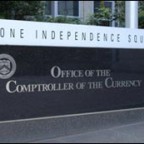OCC Cautions Bank Directors on Increasing Credit Risk

Bolstering its recent warnings concerning the easing of credit underwriting standards by national banks and federal savings associations, the Office of the Comptroller (OCC) released its 21st Annual Survey of Credit Underwriting Practices on December 9. The OCC’s survey results can be found here.
Bank directors should take particular notice of the OCC’s statement accompanying the Survey’s findings:
“Boards of directors and senior management should carefully consider the impact of eased underwriting standards on the quality and volatility of performance in their loan portfolios, particularly for products that have already seen considerable easing over the past several years, such as leveraged lending, CRE loans, indirect consumer lending, and credit cards.” (Emphasis added.)
The survey was based upon the observations of examiners at 95 banks over 12 months ending June 30, 2015. Moreover, the examiners assessed overall credit trends at these banks in 18 distinct commercial and retail credit product lines. The survey covers loans representing 94 percent of total loans in the federal banking system.
In summary, the survey shows that underwriting standards eased at a significant number of banks for the period 2013-2015 in ways similar to those experienced in the three year prior to the 2008 financial crisis. On a positive note, examiners noted adequate documentation and approval of policy exceptions. The survey also shows that the level of credit risk increased, with a significant percentage of commercial and retail loan products showing increased risk from 2014 and likely to increase even more over the next year. Contributing to these trends are: market competition, ample market liquidity, and the economic outlook and increased risk appetite. The factors most likely to be adjusted due to these conditions are changes in the maximum size of the credit line, pricing, fees, debt-to-income ratios, scorecard cutoffs and documentation requirements. The survey is accompanied by numerous data tables, showing changes in underwriting standards and credit risk levels in the specified commercial and retail lending portfolios.
In a speech on November 2nd, Comptroller of the Currency Tom Curry also raised a cautionary flag regarding the credit risks that banks are currently assuming. While noting that the asset quality of OCC-supervised banks in the fourth quarter of 2014 were comparable to those recorded in good times, Comptroller Curry stated that asset quality metrics are lagging indicators of future performance and that many banks have made a conscious decision to increase their risk appetite and take on additional risk, targeting less creditworthy customers and offering easier terms and conditions in order to compete for market share. Increased credit risk, he stated, is evidenced by relaxed credit underwriting and increased loan concentrations. To stem their drift toward increased risk, the Comptroller encouraged banks to address this issue on their own, before supervisory action. Moreover, he suggested that risk managers take a hard look at their loan loss allowances and build in qualitative judgments that recognize the real and ongoing changes in loan markets. Federal examiners, he continued, will expect “directional consistency” between the rise in credit risk and the loan allowance. The Comptroller’s November 2nd speech may be found here.


